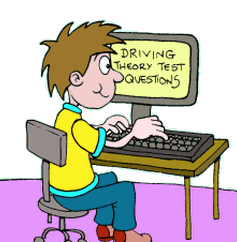Your ignition warning light
When you turn on the electrical circuits in your car, then the ignition warning light will come on: make sure that this does indeed happen.
Once the engine itself is started, then the ignition light will turn itself off, again you should make sure that this is indeed the case each time you start the car.
Sometimes the light won't go off straight away until you gently depress the accelerator. Typically this might happen if the idling speed of the engine is low.
If the ignition warning light were to come on whilst you are driving the car, then you should stop as soon as it is safe to do so. Sometimes the cause will be a loose wire or similar.
There may also be a loose connection somewhere and it might not be possible to rectify the problem yourself.
There is one other common possibility of causing this fault, and that is to do with the alternator, or more correctly the brushes in the alternator.
As ever when driving, if an unexpected light comes on then it implies that there is something not right and so therefore you should always err on the side of caution and stop when it is safe to do so and rectify the fault. If it's not something you can rectify yourself then you will need to call for the appropriate assistance.
Related Articles...
Road conditions: dealing with fog
Fogs and mists are much more common at some times of the year than others. Particularly in the mornings and in the Autumn time of the year, fog can be commonplace, but whenever it occurs it is...
Your ignition system explained
The ignition system is of course an essential part of the technology that allows cars to function, and without it you would not get very far. But what does it do? Well the system provides the...
What different cats eyes mean
There are market studs, which are usually referred to as multi-coloured studs or even more usually as cats eyes, along certain areas of motorways and optionally on other parts of motorways...
Maintaining your car
It is essential that you look after your car and keep it in good condition. Not only is this paramount for your safety and that of other road users, but also it means that the longevity of your car...
Driving Theory Stopping Distances
Stopping distances refer to the distance that you car is going to travel from the time that you decide that you need to press the brake through the time that the vehicle physically stops...
Vehicles that cannot be used for a practical test
The vast majority of drivers will of course use the vehicle of their instructor or driving school when they take their practical test and so will not need to worry about the vehicle.
However...
How does the hazard perception test work
The hazard perception test is the second part of the driving theory test, and it was introduced towards the end of 2002.
There are two parts to the theory test, and the second part of the test...
What causes accidents: pulling out
One of the most typically seen accident that happens between vehicles in and around towns and city centres is the situation where two or more roads join each other.
At these there will be...
Driving Theory Test
Until relatively recently in driving history, there was no theory test. From the time the first person passed a driving test in the UK in 1935 through to 1996, there was no separate theory test. ...
What to check on your car daily
A car is a sophisticated piece of machinery, although it is commonplace and therefore taken for granted by many there are considerable elements working together to make it work.
And if one...
Back to home page of driving theory test questions

